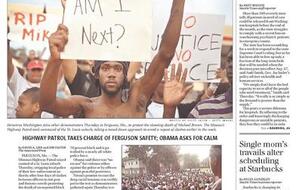Breadcrumb
Looking Back at Ferguson
At a Glance
Language
English — USSubject
- Civics & Citizenship
- History
- Social Studies
- Democracy & Civic Engagement
- Racism
Looking Back at Ferguson
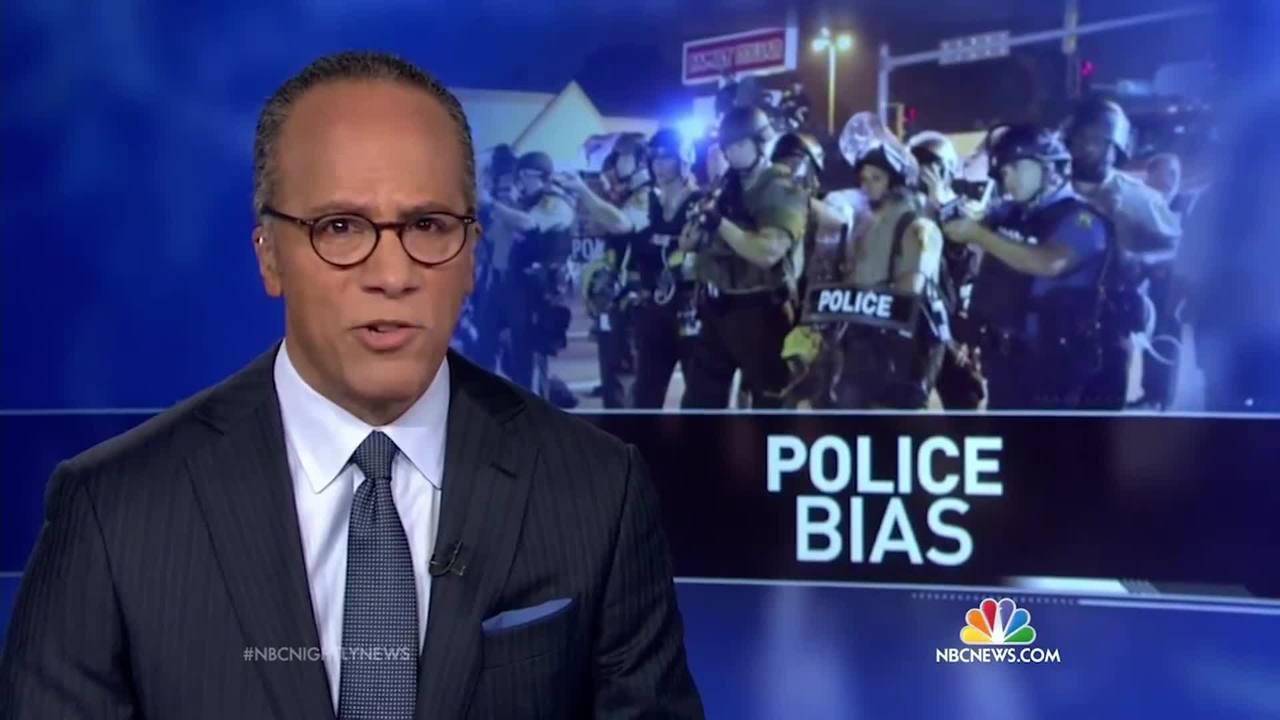
[MUSIC PLAYING]
There was growing outrage tonight after an unarmed African American teenager was shot and killed by police in the St. Louis suburb of Ferguson, Missouri.
Protesters walking, in some cases side by side with police, peacefully chanting and marching.
[CHANTING] Hands up. Don't shoot.
The aftermath to the grand jury's decision and the scenes right now in Ferguson, Missouri.
Despite all the reporting that was done on what happened with the officer, what happened with Michael Brown, I still believe that people on both sides of the issue are kind of locked into their positions.
It takes months of reporting and months of information finally becoming made public before any reasonable person could really draw a conclusion anyway, and that's what we didn't see in this case was that Michael Brown's killed August 9. By August 10th, 11th, everyone knows exactly what they think about what happened in this case, even though most of the vital information didn't become public for months.
The thing that was most striking about Ferguson, and I think that was the contributing factor to the core of the unrest, is there was no information disseminated. So you had to decide based on nothing, based on the fact that you knew that a young black man, unarmed black man was dead and that a police officer had shot him, had fatally wounded him. So you decide. Because there was no information disseminated, you decide, OK, was he a thug that wanted to be death, or was he a target? And so you kind of went from there.
And I think that people did that a lot, because there was just nothing else to go from. And it shows the importance of sharing information and getting the facts, because if you don't have the facts, you just make things up to support or make assumptions-- not just completely make things up, but you make assumptions based on what you feel, personally, happened.
A lot of people took exception to describing-- for us, describing Mike Brown as being unarmed. And their argument was that by saying he was unarmed that we were trying to paint him as a sympathetic figure.
Well, no. I mean, he was unarmed. That's a fact. And besides it being a fact, it's relevant. It's relevant to the issue. Mike Brown being unarmed was part of the reason why we saw the response that we did from the community.
If you have something that's a fact and something that's relevant to the story and you see a bias in it, I would say that would be your bias, not my bias.
With my family, a lot of them were on the police officer's side because we have a lot of cops in the family and stuff, so they were leaning more towards the policeman, even if they didn't know what the facts were, it was just kind of like, oh, well he's older and he's a cop, an authority figure, so he must be right.
What Ferguson did was really put on display people's personal experiences. And that, I think, was how you perceived the story. So if you had never heard of racial profiling, had never experienced it, then you couldn't imagine why someone would either run from the cops or why you would have a negative experience-- but if you were from a neighborhood like maybe in Baltimore or maybe Ferguson where you had had these experiences with police officers, then you instantly thought, oh, this police officer was wrong, that this was an unjustified shooting. And it seems like the reality was kind of somewhere in the middle.
Six months after the fatal officer-involved shooting of Michael Brown in Ferguson, Missouri ignited a national outcry, we've learned details from a Justice Department report expected to be released tomorrow. That report accuses the Ferguson police and courts of racial bias.
When it comes to the Justice Department report, you could glom onto any aspect that fit your worldview. You could go with the part that showed that the police department in Ferguson had some racialized practices, or you could go with the part that found that Michael Brown probably did not have his hands up when the officer approached him and that the officer could have indeed felt threatened.
I think what people tend to do is go with whichever aspect fits their worldview. And you'd hope that they would read all of the story and understand that it's not just black or white, but there's gray there.
Ferguson challenged a lot of us to try to check our biases and to pursue the truth. And I'll tell you, I think a lot of us failed that test. I really do. I think a lot of us picked sides early on. After we picked those sides, we didn't move. Oh, well, I've been here with the protesters for so long, I can't really start telling the police side of this story. How do I go back and cover the protesters again? They're just going to start yelling at me and they'll shut me out, and they would. And so that was the balance that a lot of journalists were playing.
My take on it is, you don't ever pick a side. Somebody isn't going to like you as much as somebody else because that other person did pick a side at the beginning. That's OK. In the long run, as you work through this thing, you're going to be on the right road. You will.
But that became a huge challenge in Ferguson. It really was. And I don't think I've ever covered any story where that became a bigger problem for journalists than pick a side. It was a huge problem. It really was a big deal, and it affected the way we did our jobs. It affected the way stories were presented to the public. It affected the public perception of what was happening.
I feel really fortunate. In my coverage of Ferguson, I was able to tell the story from both the side of the protesters and from a few nights of being embedded with the police and telling it from their side of the story. And so there's not many journalists that got to tell the story accurately from both sides there.
And I had a range of interactions with the police, from being threatened with tear gas-- well, from being tear gassed and having rubber bullets shot at me and being threatened with arrest and threatened with you know guns from the side of the police. And I also had a similar sort of thing of being threatened and sort of pushed around and assaulted by members-- people who were at the protests.
You hope that some of this reporting begins to create bridges of understanding that weren't already there. But often, I think you're right, that people do just feed back into what they already know, what their own experience has been, and aren't often willing to step outside of that, to understand what's happening on the other side. But you do find spaces where that begins to happen. And I will call that progress.
What so many people want across every ideological spectrum, no matter what they want to believe to be true, what they want is for it to be easy. Either Mike Brown was a thug who attacked a police officer who deserved to die, and therefore Ferguson PD did not and has never done anything wrong, or Darren Wilson and the Ferguson PD are a bunch of racists who racially profiled Michael Brown, and the whole thing should be shut down. Reality always exists in the middle of those two things. It's not an either/or.
[MUSIC PLAYING]
Looking Back at Ferguson
You might also be interested in…
#IfTheyGunnedMeDown

The Impact of Identity

The Power of Images

Preparing Students for Difficult Conversations

Social Media and Ferguson

Verifying Breaking News

Facing Ferguson: News Literacy in a Digital Age

Reflecting on George Floyd’s Death and Police Violence Towards Black Americans
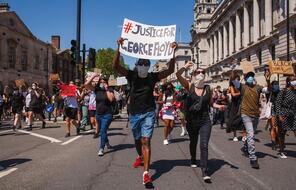
Responding to the Insurrection at the US Capitol
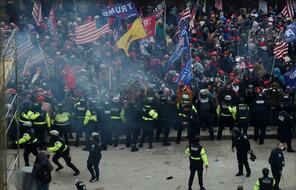
The Hope and Fragility of Democracy in the United States
What Happened During the Insurrection at the US Capitol and Why?
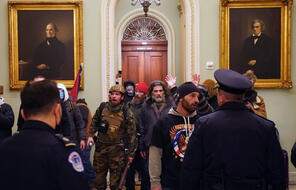
The Importance of a Free Press
